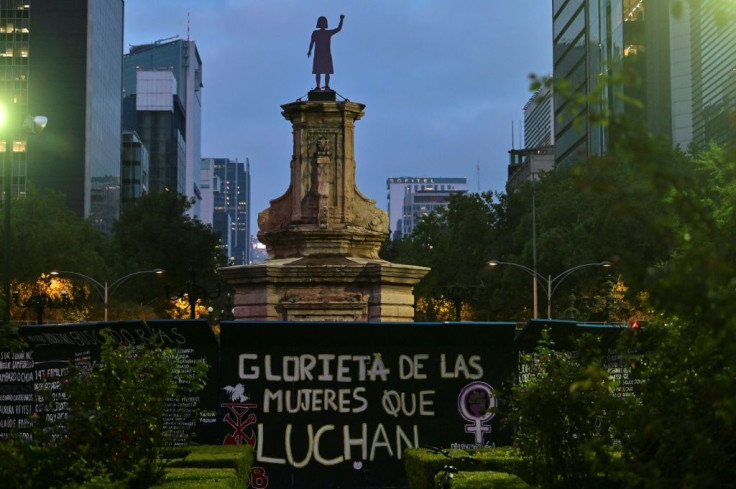Mysterious Pre-Hispanic Statue Of Young Woman To Replace Columbus In Mexico City
KEY POINTS
- The replica is nearly three times more than the size of the Columbus statue
- An official said Columbus’ statue was moved to preserve the sculpture, which was often a target of protests
- Mexico has demanded an apology from Spain and the Vatican for Indigenous treatment during the Spanish colonization era
A replica of a mysterious pre-Hispanic sculpture of an Indigenous young woman unearthed earlier this year was chosen Tuesday to replace a statue of Christopher Columbus in Mexico City, following the removal of Columbus’ statue last year.
“The Young Woman of Amajac,” as the statue is called, was named after the village where it was found buried in a field in the Huasteca region in January, Associated Press reported. After the statue’s unearthing, the National Institute of Anthropology and History said it was similar to earlier depictions of a fertility goddess in Huastec culture, but it is unclear who the stone sculpture was particularly depicting.
Mexico City to replace Columbus statue with pre-Hispanic sculpture of woman https://t.co/evWXnSVNQg
— The Guardian (@guardian) October 12, 2021
Mexico City authorities decided that the Indigenous woman’s replica should be placed in the city’s most popular boulevard as Indigenous people had been under-represented in the country. The statue will be three times the size of the original, which is 6ft (2 meters) in height, The Guardian reported.
When the Columbus statue was removed before Oct. 12, 2020, which is known in Mexico as “Dia de la Raza” (Day of the Race) or Columbus Day among Americans, authorities said it was taken down for restoration. However, Diego Prieto Hernández, the head of the National Institute of Anthropology and History, said Tuesday that the decision was made for preservation.
“This was based, not on any ideological judgment of the (Columbus) character, but rather because if a need to conserve the sculptural group, which, if it had been left in place, would have been the target of threats and protests,” Hernández said.
Protesters calling out the treatment of Indigenous peoples during the Spanish colonial era often targeted the Columbus statue with graffiti before its removal.
The Mexican government now refers to Oct. 12 as the “Day of the Pluricultural Nation,” which is celebrated in Spain as the anniversary of Columbus’ “discovery” of the Americas in 1492. With the replacement of Columbus’ statue were expressions of opposition against the statue’s potential return.
Historian Federico Navarrete told AFP that Columbus’ statue “cannot come back to its place.” For Navarette, “trying to impose this colonialist, racist narrative … makes no sense.”
His comments echoed earlier moves by the Mexican government to demand an apology from Spain and the Vatican for the treatment of its “original peoples” during the Spanish conquest in Mexico.
Pope Francis has highlighted “very painful errors” committed in the past as he marked the 200th anniversary of Mexico’s declaration of independence. https://t.co/K1De74LyvI
— Catholic News Agency (@cnalive) September 28, 2021
Spanish Prime Minister Pedro Sanchez has yet to comment on the request of Mexico’s government, but Pope Francis late last month acknowledged the “very painful errors committed in the past” during the country’s celebration of 200 years of independence from Spain.
Feminists have erected the figure of a woman with clenched fists in place of Columbus’ statue while the government prepares to set up the Indigenous woman’s replica.

© Copyright IBTimes 2024. All rights reserved.






















